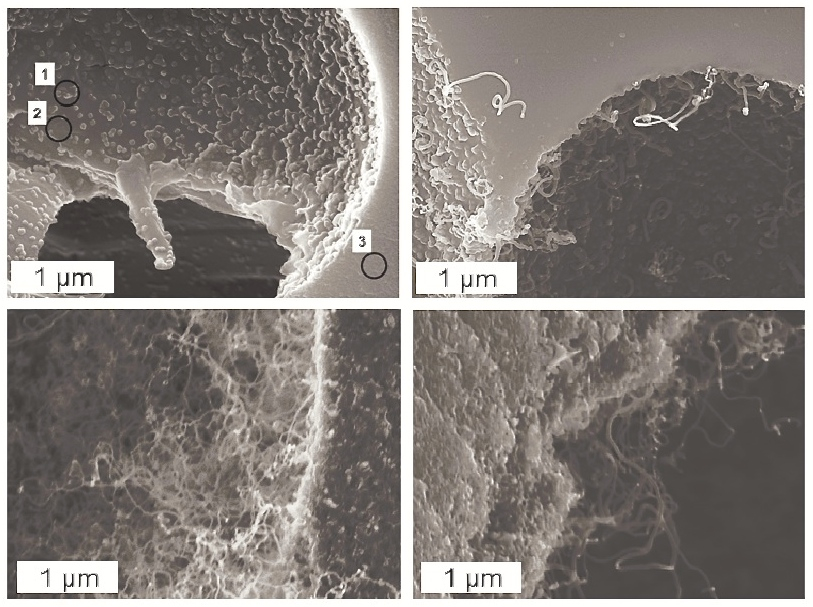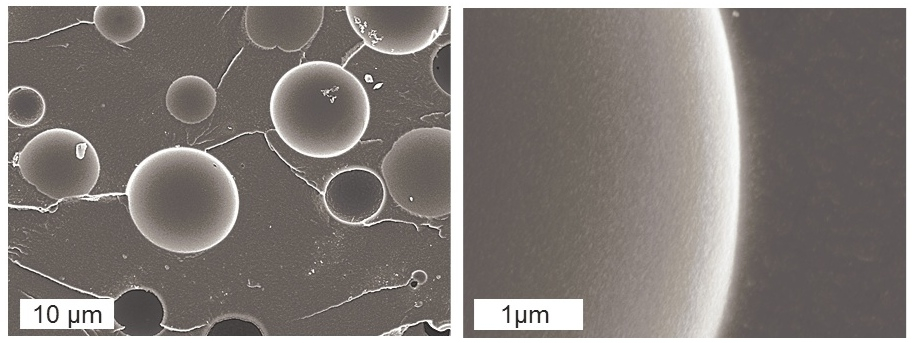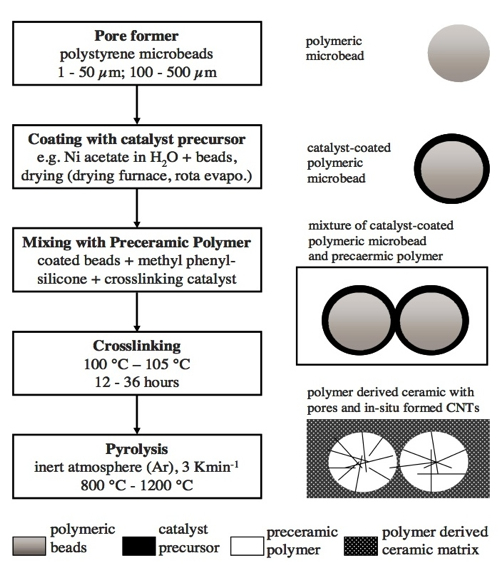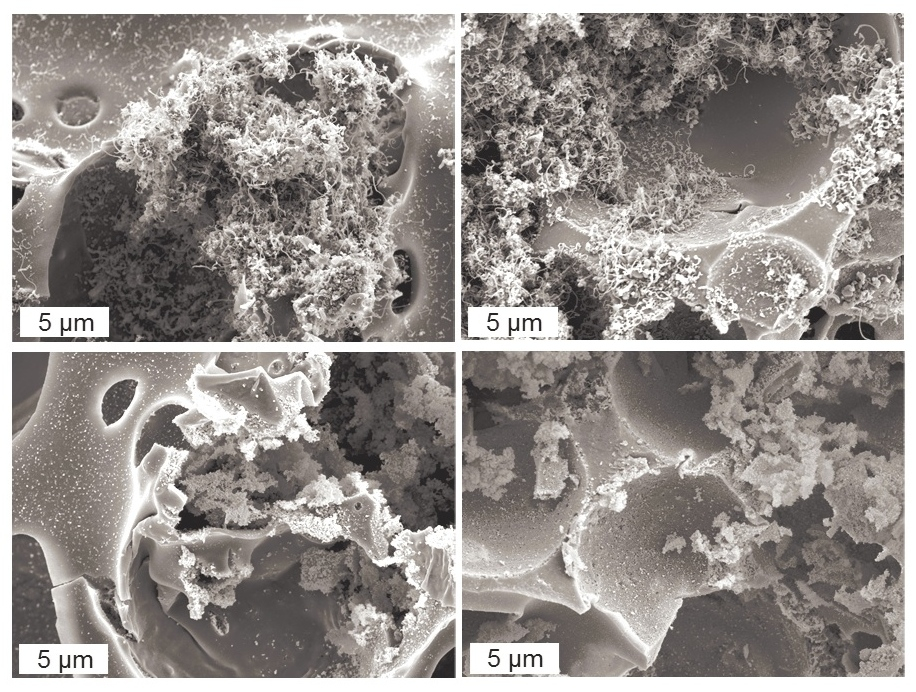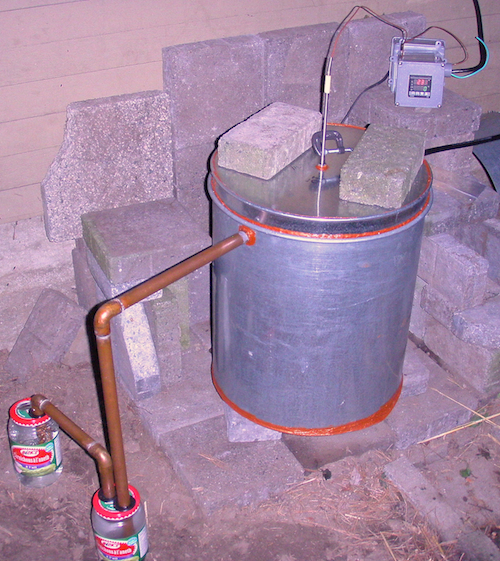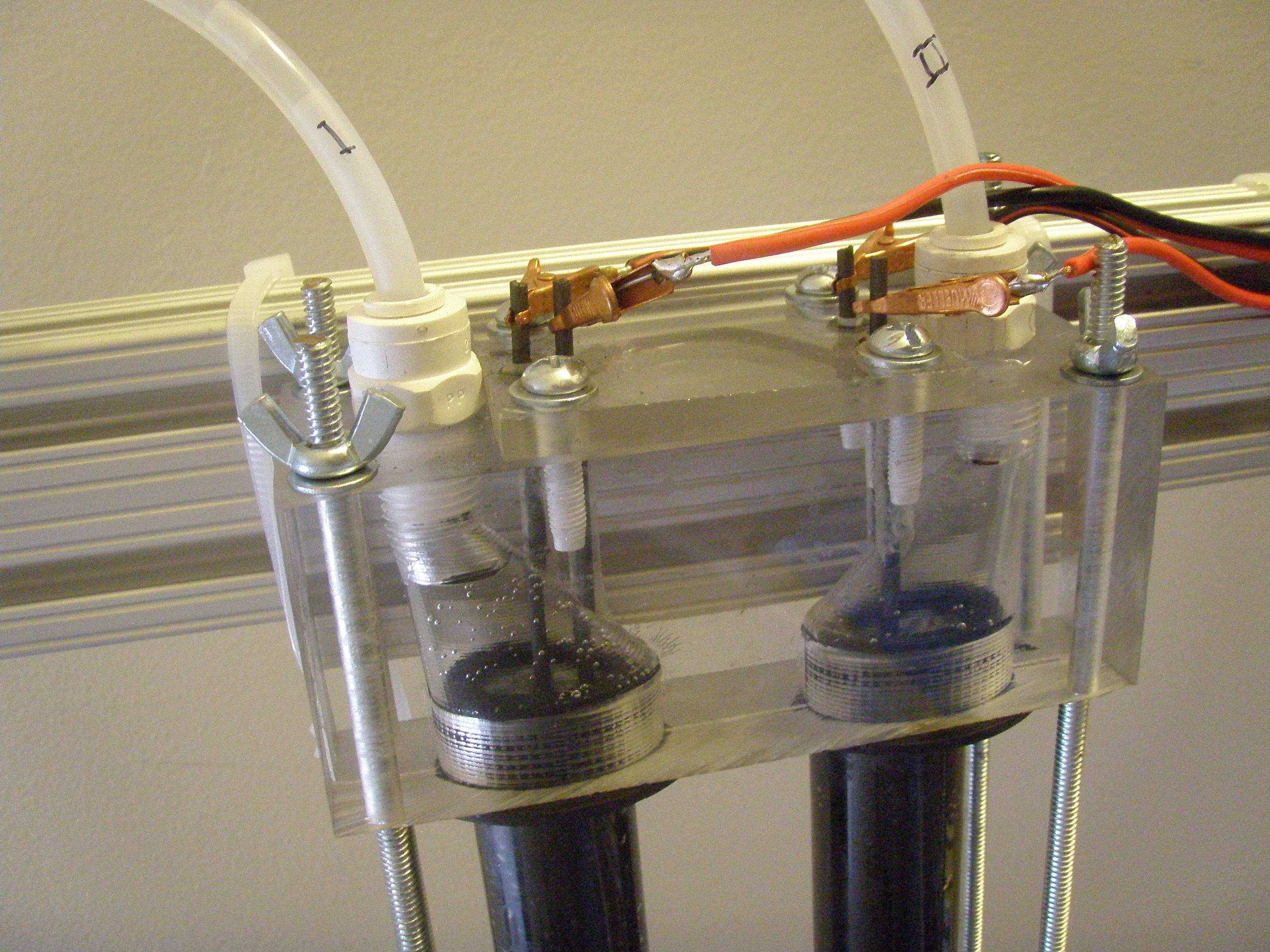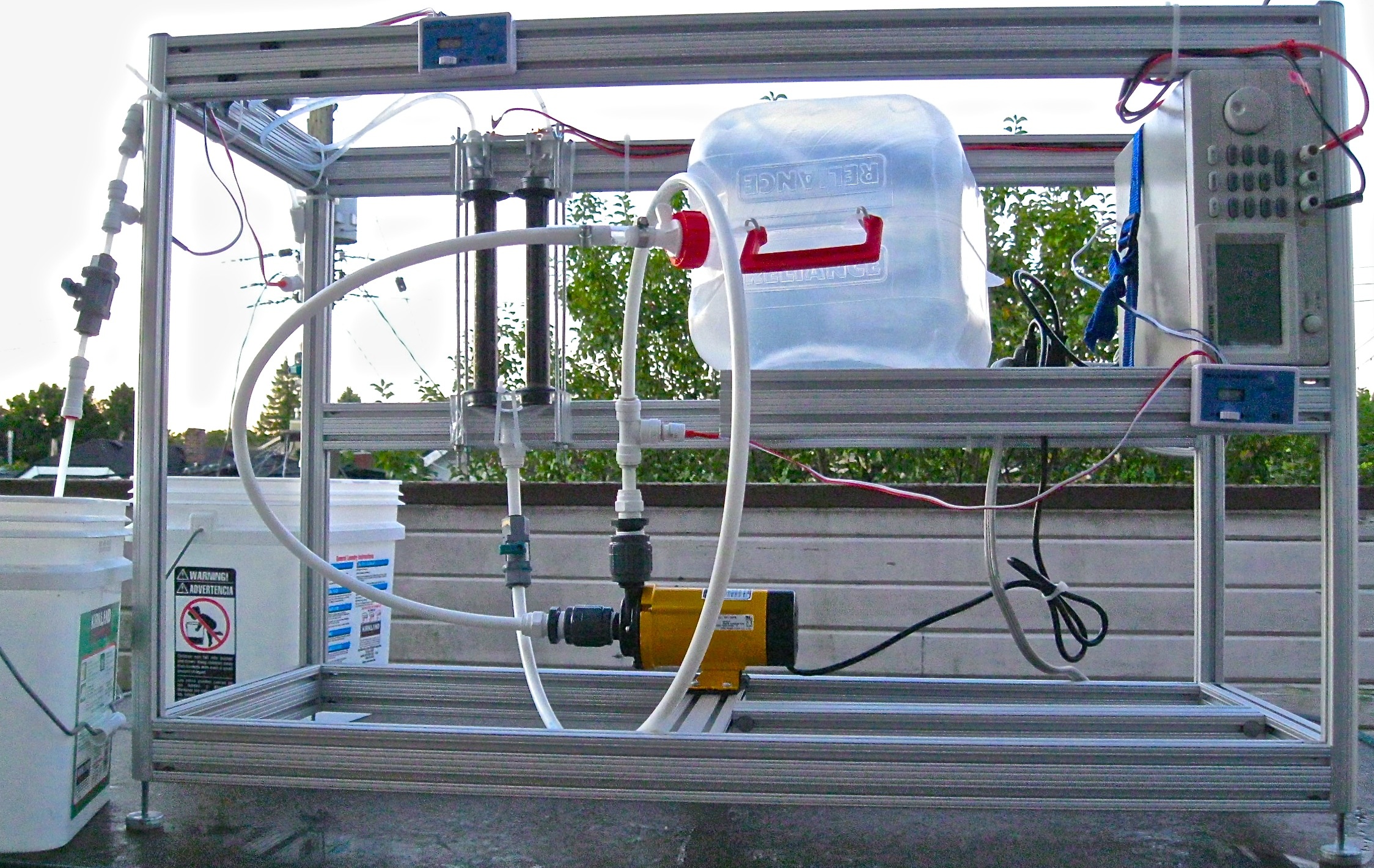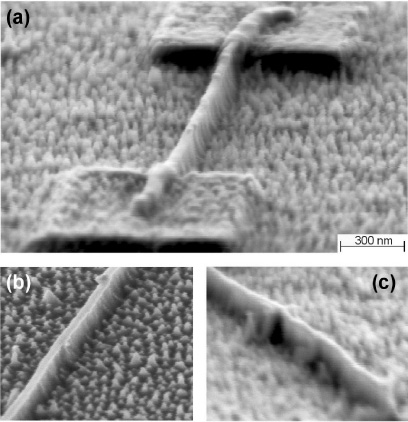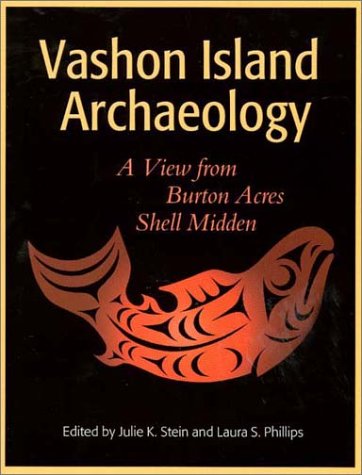Project Description
Exploring the Unknown can be Exciting, but Proceeding from Research to Useful Products Takes a Long Time.
Researched how to form and manipulate Carbon Nanotubes (CNTs) at the Technical University of Denmark and the University of Washington. We were making a ceramic foam with CNTs growing at specifically selected locations inside the pores, and was eventually published in Advanced Engineering Materials, April 2011.
These images are proof of the fact that we were controlling the growth and location of the CNTs. These images below show a smooth dense ceramic without any nanotubes when we did not provide any nickel particles to grow tubes. The one above shows what happens at various temperatures with nickel present in the pores.
As a point of reference the multi-walled carbon nanotube from one of our samples shown below is about 50 nano-meters(nm) thick. The hair on your head is around 80,000 nm thick so it would take a bundle of 1,600 such tubes to be as thick as one of your hairs. They are more interesting then your hair because they have amazing electrical and mechanical properties which make them candidates for everything from efficient batteries to lightweight bullet-proof vests.
The image below shows the process I tested. These images are all pictures I took of the results using Electron Microscopy.
The image below shows that these growths were indeed made of carbon, not silicon or something else. We showed this by burning out the tubes on the bottom two pictures leaving the nickel particles and ceramic foam, if they had been silicon nano-wires they would not have been vaporized in the presence of heat and oxygen.
Blue Ion Research and Development
Later, I brazenly tried to apply aspects of this research in building a new kind of water purification technology with Blue Ion. To achieve this on a budget I built most of my own equipment, such as an inert gas furnace, in my back yard.
In retrospect I should have realized sooner that I was not a scientific gentleman of leisure from the last century, but a poor startup fool in this one. Considering all of the limitations, this line of work got surprisingly far before I moved on to other things.
Learning How to Manipulate and Use Carbon Nanotubes
The work from a short project in Copenhagen won Cornell University’s Most Scientifically Significant Images in the Material World Contest. Published in the Materials Research Society Bulletin in August 2004.
The significance lies in the fact that no one had used CNTs as part of a die before, or been able to etch Silicon as deeply and cleanly as the base below the CNT shows above. A full study of these possibilities was conducted by my research partner and published in Nanotechnology.
Ongoing research along these lines continues at the Technical University of Denmark in making Black Silicon, which is currently used for dramatically improving sensors that rely on Raman Spectroscopy to identify chemical compounds. And a business selling these chips to research labs called Silmeco.
One Must Tread Lightly Where Research, History and Current Cultures Meet
Served on a small team of students that managed many day to day operations of an archeological excavation on Vashon Island. We were often the point of contact with the rest of the community, as the professional archaeologists were not accustomed to working with community volunteers, and so preferred more technical tasks. The volunteers were a key part of the project as they did most of the actual digging and sorting.
We also liaised with the press, memorably educating Bill Nye the Science Guy about a metamorphic rock found on the site that was mined hundreds of miles away on the other side of a mountain range and traded to people all over the region because of its excellent workability for making stone tools. Turns out that The Science Guy is not as animated at 8 am, before coffee, but he was able to get the gist and present it well when the cameras came on later that morning.
We also helped film and edit a documentary on the project about former residents of the area we were digging in, and their decedents living nearby. The details of the project from the principal archeologist’s perspective can be found here. The educational outreach element of Hands Across Time: Burton Acres Shell Midden Archaeological Project.
The Results of the project were published by the Professors from the University of Washington. Cited by various work following on how to conduct a dig that incorporates the local and native communities so that everyone has a stake in, and learns from the project. Beyond anthropological preservation of a deteriorating site, the work also provided a basis for establishing information in other fields such as historical fish and wildlife populations.
What I came away with was a deep understanding of how difficult and time consuming it can be to get anything done in a project that involves so many different stakeholders and interests. Yet these kind of undertakings also provide rewarding possibilities for people to work alongside each-other and actually talk one-on-one as fellow humans rather than faceless groups of adversaries.

